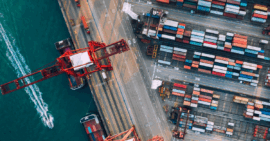As economic sanctions increasingly hamper global trade management, automation can reduce the risk of non-compliance.
When elephants fight, it is the grass that gets hurt. Something similar is happening in the world of international trade. As the dispute between the United States and China escalates, it is making life increasingly difficult for companies engaged in the global trade of goods and services.
Sanctions and Tariffs
Under President Donald Trump, the US government has imposed sanctions on countries as varied as Russia, Iran, Venezuela and North Korea as well as individuals and named entities from several other nations.
Its dispute with China has also escalated, and the US government has sanctioned several individuals and entities on issues as wide-ranging as the status of Hong Kong and human rights. China is also retaliating with its measures. In September this year, the two most significant trading powers in the world – the US and China – promulgated rules that imposed various restrictions on matters of trade and investment.
Often the rules governing these sanctions are pretty broad-based. For example, the rules notified by the US Office of Foreign Assets Control (OFAC) extend the sanctions on Russia to any entity that has a majority beneficial ownership in a sanctioned party.
These government moves impose severe restrictions on the trade activities of companies – not just from China or the US but also other countries.
Compliance Challenges
For example, for global companies, laws governing ‘Know Your Business Partner’ are becoming more stringent, and any non-compliance could have severe repercussions.
When you are exporting, you are often dependent upon another entity, not just for things like distribution and management of the brand, but also for ensuring regulatory compliances. So, it is imperative to know both your vendor as well as your customer.
Soumen Ray, Jt. President, Finance, Bajaj Auto Limited
The Chief Finance Officer (CEO) of an Indian pharma company echoed these sentiments. “In the pharmaceutical business, we have to contend with the US restricted country list. For example, you can’t import and export to certain countries.”
For companies whose products have even a hint of dual-use (civilian and military), whichsometimes happens with large engineering companies, the compliance standards become even more stringent. Just knowing the customer and vendor won’t be enough. The exporter will also have to carry out due diligence on the shipping line carrying the cargo to the destination.
Given the prevailing sentiments and the risks of non-compliance, businesses are going beyond just the regulatory risks published by governments. They are trying to develop their risk tolerance protocols based on elements like politically exposed people and those who have been portrayed in a negative light in the media.
Zoe Martinez, Proposition, Global Trade for South East Asia, India and MENA
The biggest challenges, Ms. Martinez says, is that there are now hundreds upon hundreds of lists available, and these are being updated daily. The compliance team has to check all these lists for new names added and other updated information. An entity that a firm has been doing business with may not have been in any list before. But information update may well change that status. Compliance teams are ending spending a bulk of their time staying on top of this changes and managing them.
Given all these scenarios, even the largest global companies find it challenging to keep track of what is allowed and what is restricted. Trade managers often struggle, especially if they follow manual processes, to maintain export control classifications for products while generating accurate documentation and audit trail capabilities. This is fraught with reputational and financial risks.
Automating the Compliance Process
To deal with the situation, organizations are looking at software tools that can help them manage it comprehensively. The solutions they are opting for are intelligent software systems that integrate with their ERPs. These systems are powered by content that is updated real-time and provides a comprehensive view of all regulatory lists. Such systems are becoming a vital part of the compliance process.
The other advantage such software tools provide is their ability to take a holistic view of the entire supply chain. They can analyze existing and potential new relationships with suppliers and customers – right from generating an order to shipping — and decide whether there is a person or entity a firm shouldn’t be doing business with within this chain is. Such tools use algorithms and fuzzy logic that manage false positives, and provide clear auditable communication and transaction trails, thereby minimizing financial and reputational risks, Ms. Martinez says.
The disruptions caused by sanctions and export control regulations are unlikely to go away soon. It makes sense for global enterprises to automate their export management to manage these rules and restrictions better.
ONESOURCE™ Global Trade software suite from Thomson Reuters offers a range of solutions to deal with this increasing complexity. The suite includes tools for Export Management, Supply Chain Compliance and Denied Party Screening.


